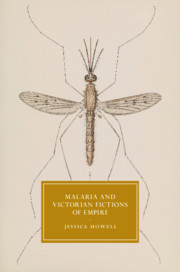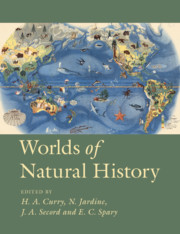Refine search
Actions for selected content:
10300 results in History of science: general interest
1 - The Dynamics of Sites of Memory
-
- Book:
- Fragments of the Holocaust
- Published by:
- Amsterdam University Press
- Published online:
- 16 February 2021
- Print publication:
- 17 December 2018, pp 25-44
-
- Chapter
- Export citation
Bibliography
-
- Book:
- Fragments of the Holocaust
- Published by:
- Amsterdam University Press
- Published online:
- 16 February 2021
- Print publication:
- 17 December 2018, pp 217-234
-
- Chapter
- Export citation
Index
-
- Book:
- Fragments of the Holocaust
- Published by:
- Amsterdam University Press
- Published online:
- 16 February 2021
- Print publication:
- 17 December 2018, pp 235-236
-
- Chapter
- Export citation
2 - The Construction of an In Situ Memorial Site: Framing Painful Heritage
-
- Book:
- Fragments of the Holocaust
- Published by:
- Amsterdam University Press
- Published online:
- 16 February 2021
- Print publication:
- 17 December 2018, pp 45-80
-
- Chapter
- Export citation
Frontmatter
-
- Book:
- Fragments of the Holocaust
- Published by:
- Amsterdam University Press
- Published online:
- 16 February 2021
- Print publication:
- 17 December 2018, pp 1-4
-
- Chapter
- Export citation
5 - The Spatial Proliferation of Memory: Borders, Façades and Dwellings
-
- Book:
- Fragments of the Holocaust
- Published by:
- Amsterdam University Press
- Published online:
- 16 February 2021
- Print publication:
- 17 December 2018, pp 173-200
-
- Chapter
- Export citation
4 - The Fragmented Memorial Museum: Indexicality and Self-Inscription
-
- Book:
- Fragments of the Holocaust
- Published by:
- Amsterdam University Press
- Published online:
- 16 February 2021
- Print publication:
- 17 December 2018, pp 133-172
-
- Chapter
- Export citation
Contents
-
- Book:
- Fragments of the Holocaust
- Published by:
- Amsterdam University Press
- Published online:
- 16 February 2021
- Print publication:
- 17 December 2018, pp 5-6
-
- Chapter
- Export citation

Malaria and Victorian Fictions of Empire
-
- Published online:
- 14 December 2018
- Print publication:
- 24 October 2018

Worlds of Natural History
-
- Published online:
- 13 December 2018
- Print publication:
- 22 November 2018
Contents
-
- Book:
- The Cambridge History of Science
- Published online:
- 01 December 2018
- Print publication:
- 13 December 2018, pp vii-ix
-
- Chapter
- Export citation
29 - Medicine and Healing in Han China
- from Part V - China
-
-
- Book:
- The Cambridge History of Science
- Published online:
- 01 December 2018
- Print publication:
- 13 December 2018, pp 574-594
-
- Chapter
- Export citation
Part I - Mesopotamia
-
- Book:
- The Cambridge History of Science
- Published online:
- 01 December 2018
- Print publication:
- 13 December 2018, pp 5-98
-
- Chapter
- Export citation
12 - Aristotle and the Origins of Zoology
- from Part III - Greek and Greco-Roman
-
-
- Book:
- The Cambridge History of Science
- Published online:
- 01 December 2018
- Print publication:
- 13 December 2018, pp 215-237
-
- Chapter
- Export citation
Acknowledgments
-
- Book:
- The Cambridge History of Science
- Published online:
- 01 December 2018
- Print publication:
- 13 December 2018, pp xix-xx
-
- Chapter
- Export citation
7 - Egyptian Calendars and Astronomy
- from Part II - Egypt
-
-
- Book:
- The Cambridge History of Science
- Published online:
- 01 December 2018
- Print publication:
- 13 December 2018, pp 131-143
-
- Chapter
- Export citation
1 - Science and Ancient Mesopotamia
- from Part I - Mesopotamia
-
-
- Book:
- The Cambridge History of Science
- Published online:
- 01 December 2018
- Print publication:
- 13 December 2018, pp 7-28
-
- Chapter
-
- You have access
- HTML
- Export citation
General Editors’ Preface
-
- Book:
- The Cambridge History of Science
- Published online:
- 01 December 2018
- Print publication:
- 13 December 2018, pp xvii-xviii
-
- Chapter
- Export citation
Introduction
-
-
- Book:
- The Cambridge History of Science
- Published online:
- 01 December 2018
- Print publication:
- 13 December 2018, pp 1-4
-
- Chapter
- Export citation
Notes on Contributors
-
- Book:
- The Cambridge History of Science
- Published online:
- 01 December 2018
- Print publication:
- 13 December 2018, pp xii-xvi
-
- Chapter
- Export citation
